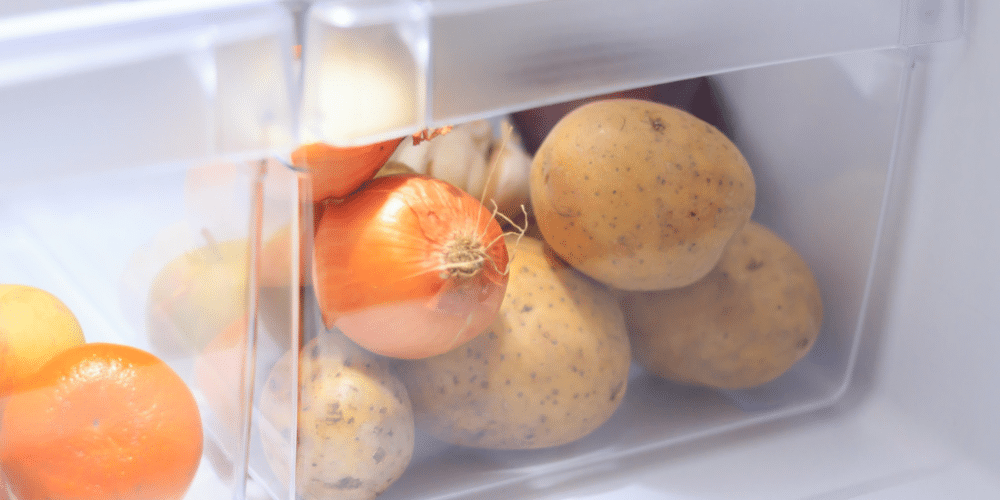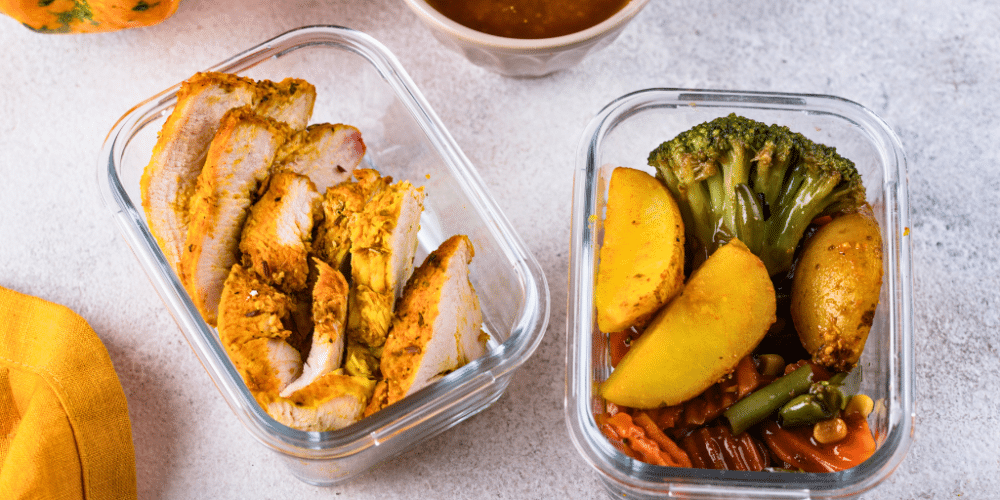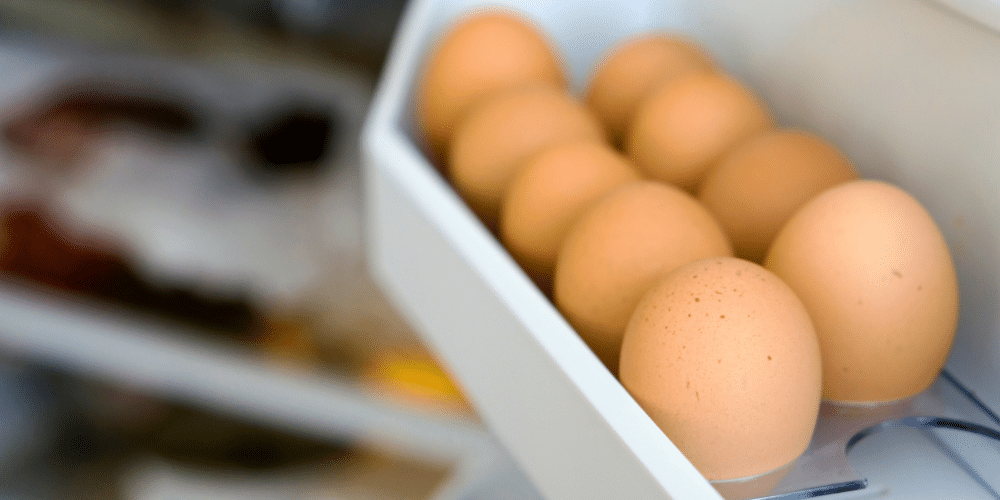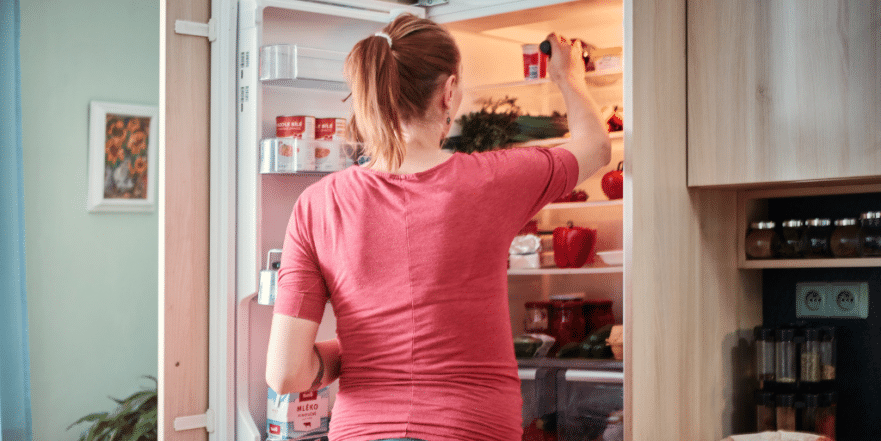
Imagine this: you wake up in the middle of the night, incredibly thirsty. You walk barefoot to the kitchen, the cold floor beneath your feet. The house is dark and silent, except for the low hum of the refrigerator. You open the door slowly, and that cold, white light illuminates your sleepy face. And there, hidden between last night’s leftovers, a forgotten piece of fruit, and a tub of margarine, is a silent killer you never even suspected. It’s an item so common, so ordinary, present in the daily lives of most households, that the International Agency for Research on Cancer (IARC) has officially classified it as a Group 1 carcinogen—the very same category as cigarettes.
This isn’t scaremongering; it’s science. Studies involving over half a million people, based on updated scientific evidence like the UK Biobank, prove that consuming just 50 grams of this item daily can increase your risk of colon cancer by up to 18%. What’s more alarming is that many people consume far more than what is considered a safe limit. In the next few minutes, I’m going to reveal exactly what this food is and seven other dangers that are silently affecting you and your family without you even realizing it. When I reveal the final one, you’ll be shocked at how obvious it was and that no one warned you sooner. This modern marvel, the refrigerator, which saved millions from foodborne illness, can, when used incorrectly, be silently destroying your health. Stay with me, because I guarantee you will change many of your habits starting today.
Key Takeaways
- Improper Storage Creates Toxins: Simple storage mistakes, like keeping potatoes in the fridge or meat on styrofoam trays, can create or introduce harmful chemicals like acrylamide and styrene into your food.
- Processed Meats Are a Proven Risk: Items like sausage, bacon, and ham are classified as Group 1 carcinogens, with daily consumption significantly increasing the risk of colorectal cancer.
- Containers Matter: Storing food in the wrong containers, such as opened metal cans or certain painted glass jars, can cause metals and chemicals like BPA and lead to leach into your food.
- Temperature Stability is Crucial: Storing items like eggs in the fridge door exposes them to temperature fluctuations, increasing the risk of bacterial growth like Salmonella.
7. The Humble Potato

Get ready, because food number seven is the potato. Yes, the same potato you buy by the bag, the foundation of so many meals, which you innocently place in the refrigerator to make it last longer. But it’s precisely this common habit that is activating a silent poison factory inside your food: acrylamide.
You’re going to understand now why the refrigerator is the villain in this story. At temperatures below 46°F (8°C), which is the typical temperature of your fridge, the potato is forced to change. Its natural starch converts into reducing sugars. When you then fry, air-fry, or grill these potatoes at temperatures above 250°F (120°C), these sugars react and create acrylamide, a substance classified as a probable human carcinogen. Just by putting potatoes in the fridge for three days, you are multiplying the danger, increasing its levels by more than six times. The FDA and other international bodies recommend against storing raw potatoes in the refrigerator. Instead, store your potatoes in a cool, dark, and ventilated place, always above 50°F (10°C). It’s a simple adjustment that can make a huge difference to your health and your family’s.
6. Open Canned Foods

This next one is a habit almost everyone has, and you’re probably doing it right now in your own fridge: storing opened canned foods in their original can. You know, that leftover corn, peas, or even tuna that you just leave in the open can? This is a serious and dangerous mistake. When a metal can is opened, the tin coating often used to line it reacts with oxygen and the acids in the food. This reaction causes tiny metal particles to migrate into your food.
This can alter the taste, giving it that unpleasant metallic flavor, but the main problem is the chemical contamination. In addition to metal migration, many cans still contain internal linings with substances like BPA (bisphenol A). Even in small amounts, BPA can act as an endocrine disruptor, causing a host of long-term health problems, including lowering your testosterone. The golden rule is incredibly simple: as soon as you open a can, immediately transfer the contents to a glass jar or a BPA-free silicone container and seal it tightly before putting it in the refrigerator. This simple step protects you from a hidden chemical threat.
5. Old Leftovers

You know that pan of rice from two days ago or that container of beans you forgot about in the back of the fridge? Well, old leftovers can be an unexpected source of trouble. You might think, “It’s in the fridge, it’s safe,” but that’s not entirely true. Time is cruel to food. Rice and beans, for example, are perfect breeding grounds for a treacherous bacterium called Bacillus cereus.
This bacterium doesn’t spoil the taste of the food, but when you eat it, it releases toxins that can cause intense vomiting and severe food poisoning. And the risk isn’t small. The chances of having problems double after just five days in the refrigerator. Therefore, leftovers, especially those containing starch or protein, should be consumed within a maximum of three to four days. If it’s been longer than that, throw it out. It’s always better to be safe than sorry.
4. Eggs in the Refrigerator Door

Yes, the egg. A common mistake many people make is where they store their eggs in the refrigerator. I’m talking about the refrigerator door. Most refrigerators come with a lovely, custom-made compartment in the door specifically for eggs, but this is one of the worst places for them. The door is the part of the refrigerator that experiences the largest and most frequent temperature fluctuations every time you open and close it.
This temperature variation is a paradise for the proliferation of Salmonella bacteria. Studies show that storing eggs in the door can increase the risk of Salmonella contamination by up to 25%. And don’t underestimate this risk. The CDC estimates Salmonella causes about 1.35 million illnesses in the U.S. each year, with symptoms ranging from severe abdominal pain and diarrhea to more serious conditions, and even death in the elderly and children. The solution is simple: store your eggs on the middle or top shelf of the refrigerator, in their original carton or a closed container, where the temperature is more stable and cold. This small change makes a huge difference to your food safety.
3. Acidic Foods in Certain Glass Jars

Now we’re in the top three, and item number three is a mistake you make precisely when you think you’re doing the safest thing possible: using glass to store food. But it’s a detail that no one sees that could be releasing heavy metals directly into your tomato sauce. The culprit? Acidic sauces like tomato or lemon, stored in glass jars with enameled or painted labels.
It sounds unbelievable, right? Glass is inert; it’s the best option for storing food. I think so too. But the trap is hidden in something you don’t even notice: that beautiful design, the colorful label printed directly on the glass. Many glass jars, especially those we reuse from store-bought products, have labels, designs, or measurements enameled or painted directly onto the glass surface. And that’s where the danger lies. These colorful enamels often contain heavy metals like lead. When you store acidic foods—like homemade tomato sauce, vinaigrette, or any sauce with vinegar—in these jars, the acid in the food reacts with the enamel. This reaction causes lead and other toxic metals to migrate from the glass into your food. Lead is an extremely dangerous heavy metal that accumulates in your body and can cause irreversible neurological damage, developmental problems in children, anemia, and various other serious diseases. So, check your glass containers today. If you’re reusing glass jars to store food, especially acidic ones, make sure they are plain, transparent glass without any kind of enamel, paint, or printed label on the material itself.
2. Processed Meats

Now we return to that silent killer I mentioned at the beginning, the one that the world’s highest authority on cancer research has placed in the same category as cigarettes. It’s in your refrigerator right now, disguised as convenience. Yes, it’s processed meat: sausage, ham, bacon, salami, and hot dogs. These items, which seem so practical and tasty for your breakfast, lunch, or snack, are silent traps.
The studies are overwhelming. Research involving over half a million people, such as the UK Biobank, confirms that consuming processed meat can increase the risk of colorectal cancer by 18% for every 50 grams consumed daily. That’s just a couple of slices of bacon or one hot dog. The most worrying part is that many of us consume far more than this amount regularly. This means we are exposing ourselves to an extremely high risk, day after day, without realizing it. You put it in the fridge thinking it’s fine, but you’re storing a disguised enemy. What should you do? Drastically reduce your consumption of processed meat. Opt for fresh meats prepared at home. I know it’s not easy to change habits, but your health and your family’s health are worth every effort. Think about that the next time you go grocery shopping.
1. Meat on Styrofoam Trays

This one is guaranteed to shock you. The number one item on our list, and the danger I’m about to reveal, is present in your refrigerator, or more specifically, your freezer. It’s the tray of meat you bought at the supermarket. I’m sure you never imagined this one. The danger lies in the styrofoam tray underneath the meat. That styrofoam is made of polystyrene, which contains a substance called styrene, classified as a Group 2B carcinogen, meaning it is possibly carcinogenic to humans.
The big problem isn’t just the styrofoam itself, but what happens when the meat sits on it, especially when frozen. Recent studies from agencies like the FDA show something shocking: residual styrene gradually migrates into fatty foods like meat, with detectable levels increasing significantly with storage time. It doesn’t stay put; it leaches out of the styrofoam and infiltrates the meat. Research in scientific journals like Food Additives and Contaminants reveals that cumulative exposure via plastic packaging contributes to the presence of styrene traces in the general population’s blood, indicating a silent, constant, and very frequent contamination. Even worse, when you’re in a hurry and need to defrost ground beef or a steak quickly, you might put the whole tray in the microwave with the PVC film on top. This mistake releases two poisons at once: the styrene from the tray and phthalates from the PVC film, which are known endocrine disruptors. The solution is simple and within your reach. Before freezing your meat, take it off the styrofoam tray immediately. Transfer it to a plain glass container or a silicone bag. This simple action drastically minimizes the risk of migration.
Conclusion
There you have it—the seven silent killers that might be lurking in your refrigerator, from the humble potato to the styrofoam tray. Now that you have this knowledge, you can make simple changes to protect your health and the health of your family. It’s not about fear; it’s about awareness. Small, conscious choices in how we store our food can have a profound impact on our long-term well-being. Which item on this list surprised you the most? Let me know in the comments below.

